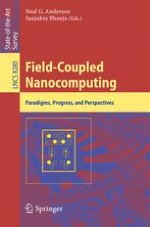2014 | OriginalPaper | Buchkapitel
Reversible and Adiabatic Computing: Energy-Efficiency Maximized
verfasst von : Ismo Hänninen, Hao Lu, Enrique P. Blair, Craig S. Lent, Gregory L. Snider
Erschienen in: Field-Coupled Nanocomputing
Verlag: Springer Berlin Heidelberg
Aktivieren Sie unsere intelligente Suche, um passende Fachinhalte oder Patente zu finden.
Wählen Sie Textabschnitte aus um mit Künstlicher Intelligenz passenden Patente zu finden. powered by
Markieren Sie Textabschnitte, um KI-gestützt weitere passende Inhalte zu finden. powered by
